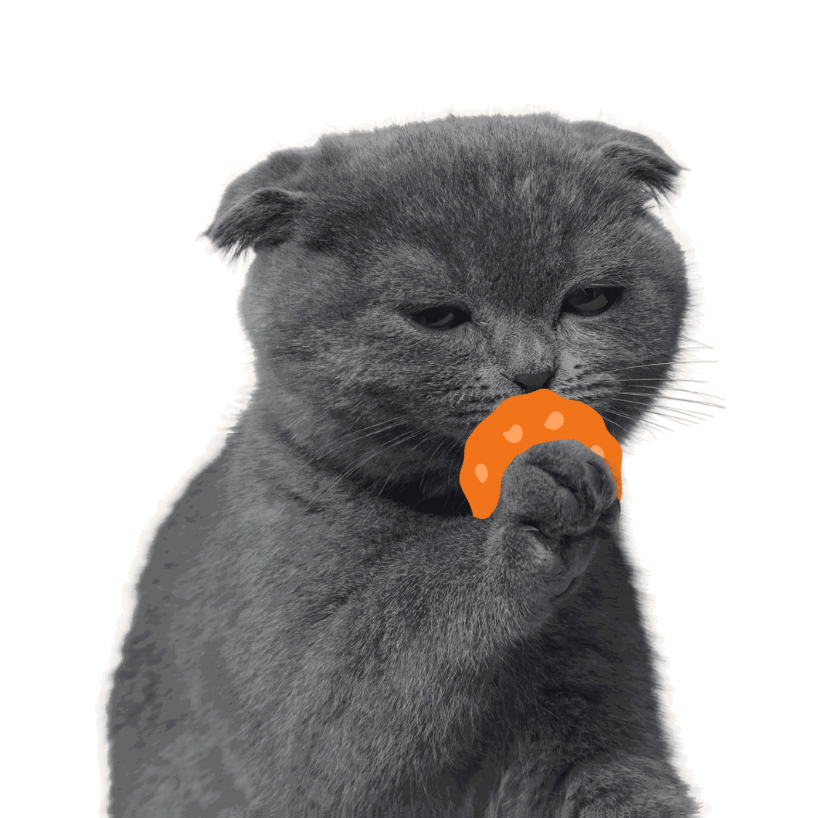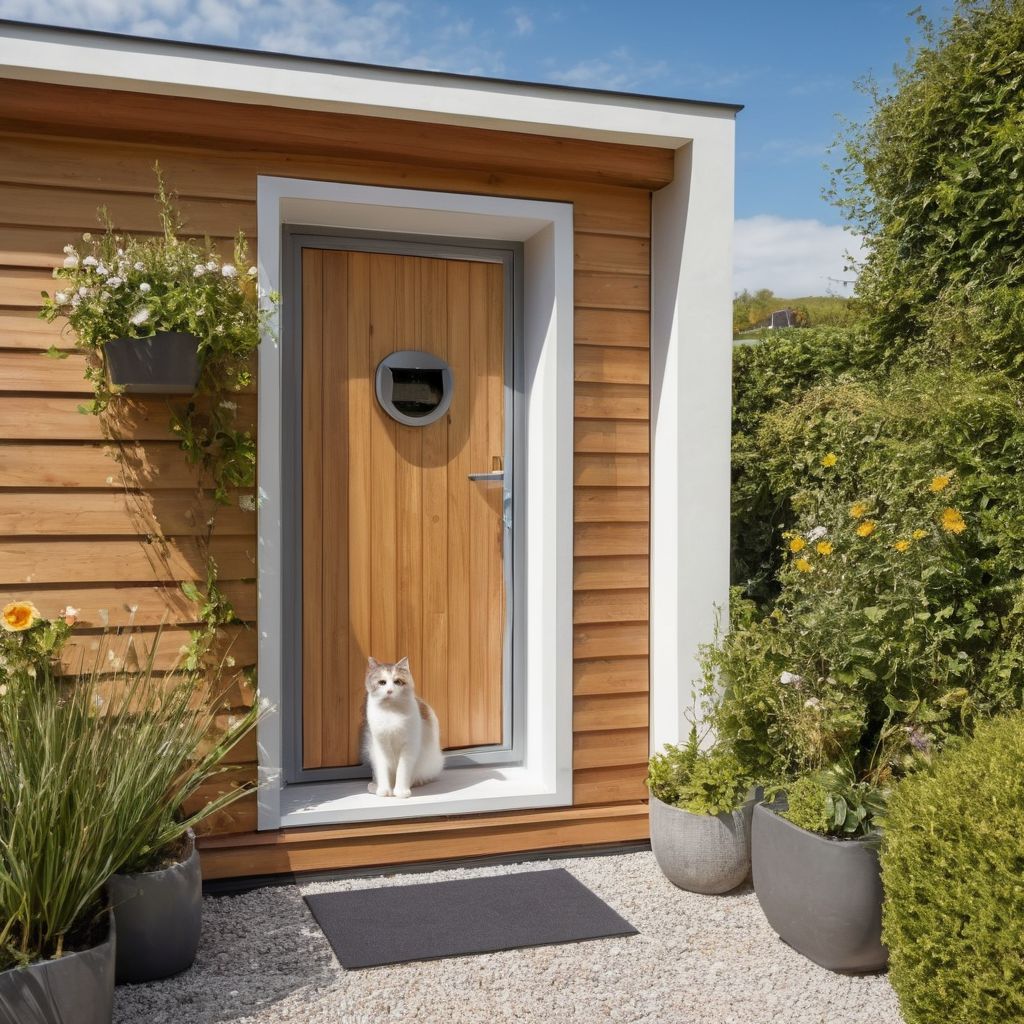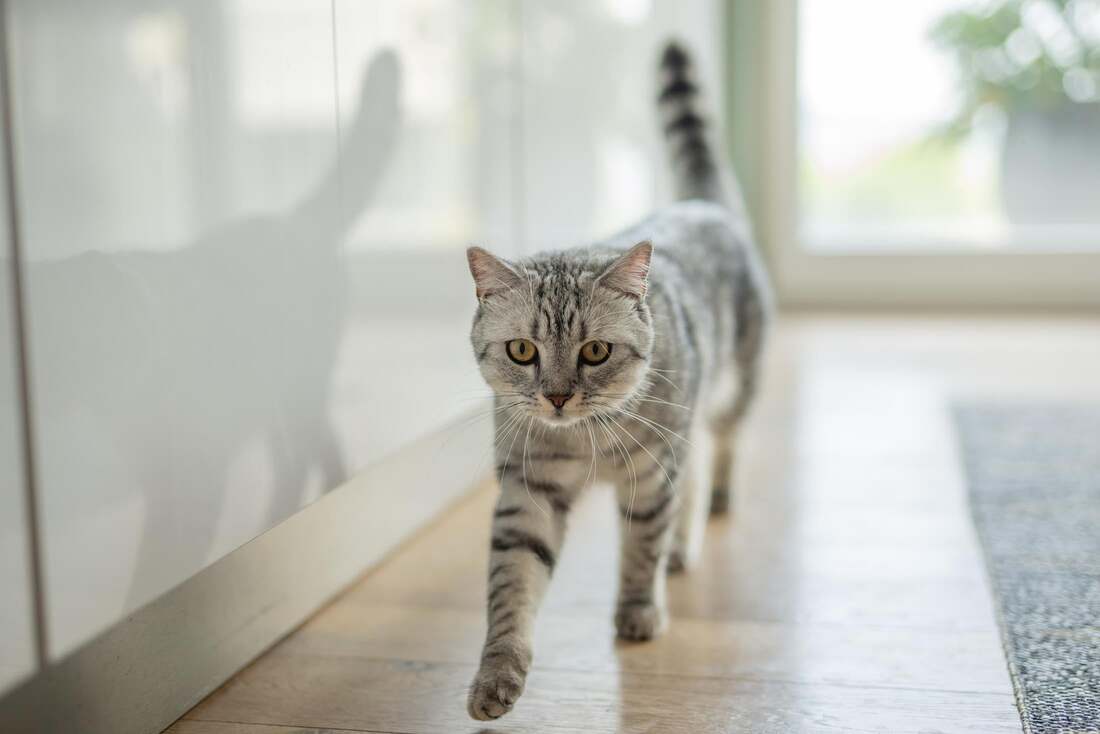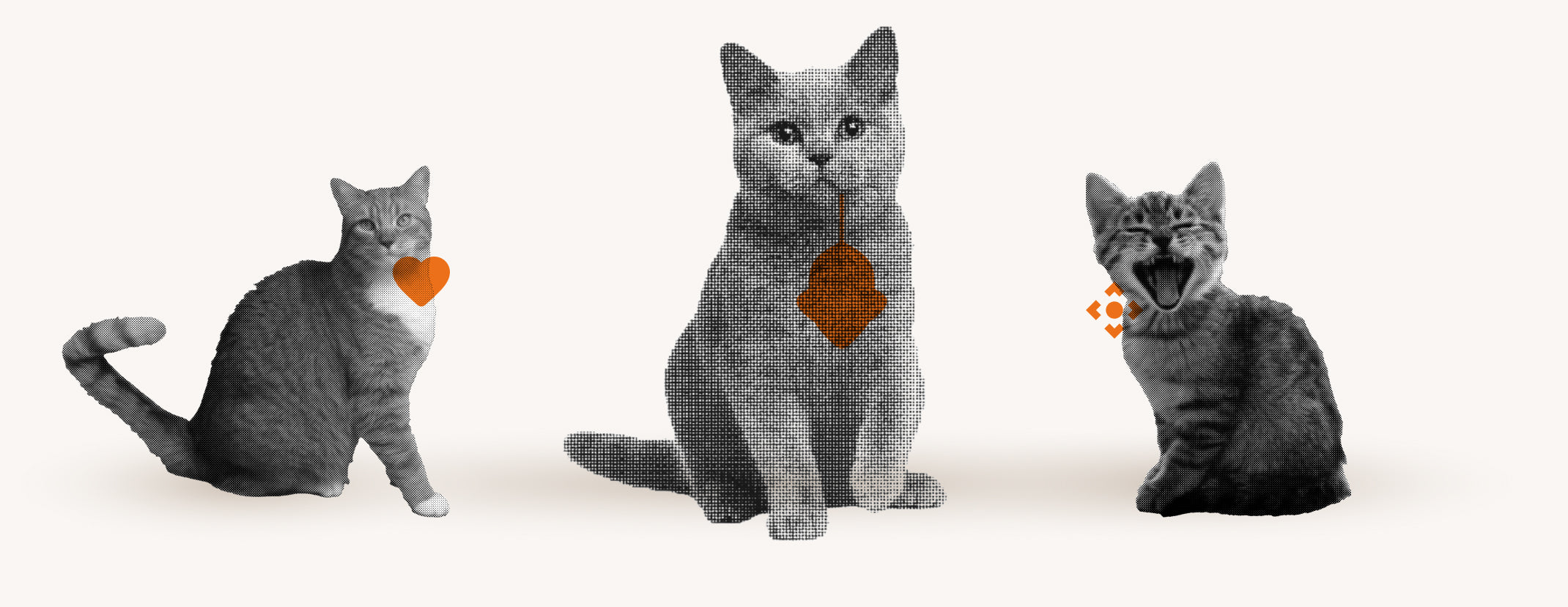Do you have a passive house and want to offer your cat freedom without wasting energy?
Many cat flaps are not suitable for passive houses and can lead to high energy losses.
The petWALK pet doors are the only cat flaps in the world that meet the strict criteria for passive houses and help you save heating costs while promoting environmental protection.
In this article, you will learn everything about choosing and installing cat flaps in passive houses, the benefits of energy-saving models and how to find the right cat flap for your home.
Energy-saving cat flaps for passive houses: importance and advantages

Energy-saving cat flaps are very important in passive houses as they help to minimise energy consumption whilst ensuring comfort for the cat. Installing a specially designed cat flap that meets the strict insulation requirements of a passive house will prevent valuable heat energy being lost through frequent opening and closing. This is especially important in a home designed to save energy and protect the environment.
In addition to saving energy, such a cat flap also offers increased comfort for the cat and the homeowner. The cat can go in and out independently , which gives it more freedom and opportunities to move around. For the homeowner, this means less effort in manually opening and closing the door and thus a more convenient and efficient everyday life.
Selection of cat flaps with optimal thermal insulation
When choosing a cat flap with optimal thermal insulation, several important aspects should be taken into account. A high-quality cat flap is characterized by materials such as aluminum or specially insulated plastic that minimize heat loss. Models with a double seal or special insulation are particularly effective , as they not only keep the heat in the house but also prevent cold from entering.
Advantages of cat flaps in passive houses
Installing a cat flap in a passive house has numerous advantages. Firstly, significant energy savings can be achieved , as the optimized thermal insulation means less heating energy is needed to maintain the desired room temperature. Secondly, comfort in the living area is improved, as there are no draughts caused by a poorly insulated cat flap. Thirdly, it offers pets the freedom to go in and out as they need, which is particularly beneficial for older or sick animals.
How to choose the right cat flap for a passive house
Choosing the right cat flap for a passive house is crucial to maximise energy efficiency and comfort. It is important that the cat flap is specifically designed for passive houses to meet the strict insulation requirements. Good thermal insulation is essential as it helps to minimise energy loss and keep heating costs down.
In addition to thermal insulation, aspects such as safety and sustainability should not be neglected. A cat flap with an integrated chip system increases safety by ensuring that only your own cat has access. In addition, the flap should be made of sustainable materials in order to comply with the ecological principles of a passive house.
Different types of cat flaps for passive houses
There are various types of cat flaps on the market that are suitable for use in passive houses. Models that have excellent thermal insulation and are also equipped with a double seal are particularly popular. These flaps help to reduce heat loss and keep the room temperature stable.
Some of the available cat flaps for passive houses offer additional features that make them particularly attractive:
- Automatic opening mechanisms that respond to motion detectors or RFID chips.
- Secure locking systems that can be integrated into the home alarm system.
- Extra insulation options for frame and flap to avoid heat loss.
Automatic cat flaps: A convenient solution for passive houses
Automatic cat flaps are a convenient and energy-efficient solution for passive houses. They only open when your cat approaches, thanks to technologies such as RFID or infrared, which keeps unwanted visitors out. These flaps not only offer convenience through automatic opening and closing, but also effectively prevent the energy loss that can occur with conventional flaps.
Installing cat flaps in passive houses: A step-by-step guide
Installing a cat flap in a passive house requires special attention to ensure the energy efficiency of the house. It is therefore important to choose an energy-saving, sustainable and high-quality cat flap that is optimally insulated and well sealed. Before installation, you must ensure that the position of the cat flap minimizes energy loss and does not create cold bridges. For example, a suitable position would be a wall facing south or west and protected from the wind.
The steps of installation include measuring the cat, cutting a suitable hole in the wall and securely fixing the cat flap. It is important that the hole is a precise fit to ensure an optimal seal. To do this, use a jigsaw and ensure that the hole is flush on both sides of the wall. You should then seal the cat flap with sealant to ensure airtightness.
Installing cat flaps: tips and tricks
When installing a cat flap in a passive house, there are a few important points to consider to ensure that energy efficiency is not compromised. First, you should measure the size of your cat and choose a flap that is large enough for your cat to fit through comfortably. Make sure that the cat flap is easily accessible and that your cat can quickly find its way to the flap.
Once you have determined the right size cat flap, you will need to cut an opening in the wall that is exactly the same size as the flap. It is essential that the opening is level and straight to ensure an optimal seal. Use a jigsaw to make the cut and make sure the edges are clean and smooth. After fitting the flap, you should check the installation for air leaks and make sure it is properly sealed.
Maintenance of cat flaps in passive houses
Regular maintenance of your cat flap in a passive house is crucial to maintaining its functionality and energy efficiency. Check the flap and lock regularly to make sure everything is working correctly. Clean the flap regularly of dust and dirt to ensure optimal air sealing. If necessary, replace the seals to maintain air tightness and avoid energy loss.
Sustainable cat flaps: Innovations for ecological living spaces
Sustainable cat flaps are not only important for the well-being of your cat, but also for protecting our environment. Modern innovations in cat flaps include various environmentally friendly solutions that help minimize the ecological footprint:
- Materials: Many manufacturers rely on recyclable materials or those made from renewable raw materials to reduce environmental impact.
- Energy efficiency: Cat flaps specially developed for passive houses prevent unnecessary heat loss and thus contribute to energy savings.
- Durability: High quality and the possibility of easy maintenance and repair extend the life of the products and avoid frequent replacement, which in turn saves resources.
These sustainable approaches not only reduce environmental impact, but also provide a long-term, cost-effective solution for cat owners who love their pets while respecting nature.
Safety of cat flaps in passive houses
The safety of your cat is a key consideration when it comes to installing a cat flap in a passive house. Passive houses are particularly well insulated and sealed, which requires special considerations regarding the safety of the cat flap. Firstly, you should make sure that the flap has automatic closing mechanisms to prevent injuries. These should be designed to close slowly and safely. It is also important to choose a flap that is only accessible to your cat . This can be achieved by using a flap with a chip system that ensures that no foreign animals or unwanted guests can enter. Here are some points to consider:
- Automatic closing mechanisms : Prevents the flap from closing abruptly and trapping your cat.
- Access control : A flap with an integrated chip system reads your cat's microchip and opens only for them.
- Quality and durability : Choose a cat flap that is robust and durable to ensure long-term safety and functionality.
Cat flaps in rented apartments: What is allowed?
If you live in rented accommodation and want to install a cat flap, there are a few legal aspects you need to consider. Firstly, it is important that you get your landlord's consent before making any changes. Installing a cat flap is often seen as a structural alteration, which without permission can lead to problems, including possible claims for damages or even termination without notice. Therefore, it is crucial that you prepare well and communicate openly with your landlord.
To make the conversation with your landlord easier, you can consider the following steps:
- Explain the benefits of a cat flap, such as reducing the noise and disturbance that can occur when the cat tries to go in and out.
- Show your willingness to cover the costs of installation as well as any dismantling work when you move out.
- Offer to make a written agreement that records all details and agreements to avoid misunderstandings and create legal certainty.
By making these preparations, you demonstrate a sense of responsibility and increase the chance of your landlord's approval.
Choose Flappie for your passive house cat flap
If you own a passive house and need a cat flap that is both environmentally friendly and innovative, then Flappie is the perfect choice for you. Flappie 's smart cat flaps are specifically designed to minimize energy loss while giving your cat the freedom it needs. The benefits of Flappie are impressive:
- Selective access control prevents cats from entering the house with prey.
- Prey detection through AI-supported camera.
- Remote control and notifications via the Flappie app.
These features make Flappie not only a practical but also an environmentally friendly choice for your home.
Frequently Asked Questions
Can landlords prohibit cat flaps?
Yes, the landlord can prohibit the installation of a cat flap. It is important to get your landlord's consent before installing a cat flap. Installing a cat flap is often seen as a structural alteration, which without permission can lead to problems, including possible claims for damages or even termination without notice.
How burglar-proof is a cat flap?
The safety of your cat is a key aspect when installing a cat flap in a passive house. Modern cat flaps offer automatic locking mechanisms and access controls through integrated chip systems that ensure that only your own cat has access. These functions increase burglary security by preventing foreign animals or unwanted guests from entering.
Where is the best place to install a cat flap?
A suitable position for installing a cat flap in a passive house is a wall facing south or west and protected from wind. It is important that the position of the cat flap minimises energy loss and does not create cold bridges.





Share:
Everything about cat flaps with windows: installation and advantages
Everything about the insulated cat flap: installation and advantages